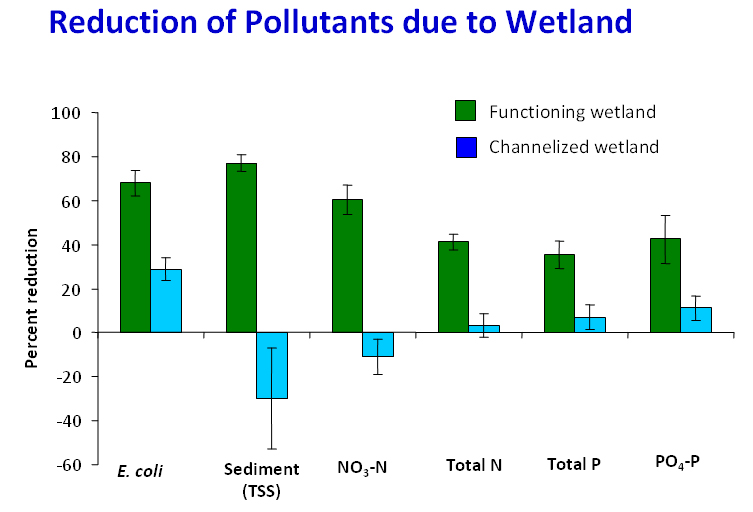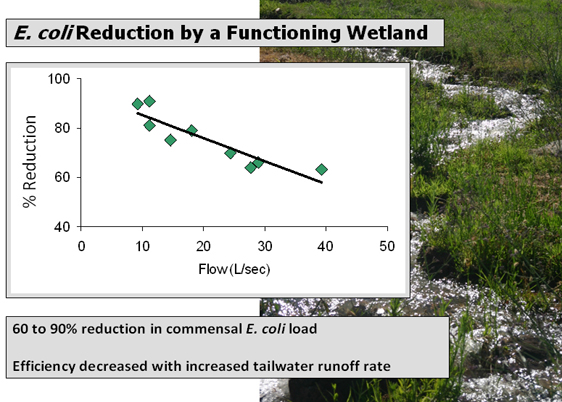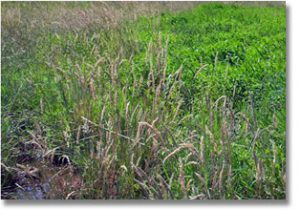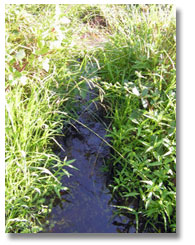We examined the potential for a functioning wetland and a degraded-channelized wetland to filter pollutants from irrigated pasture runoff at the UC Sierra Foothill Research and Extension Center near Browns Valley, California. The wetlands were approximately 0.5 acres in size, and received tailwater from about 12 acres of pasture. Tailwater runoff rates entering the wetlands ranged from about 0.30 to 1.40 cubic feet per second (cfs).
Pasture runoff flowed through each wetland, and we conducted above and below sampling to determine how well each filtered pollutants

Less pollutant load was filtered at high runoff compared to low runoff (flow)

The functioning wetland reduced loads of suspended sediments (TSS), nitrate (NO3-N), and Escherichia coli by 77, 60, and 68%, respectively. Retention of total nitrogen (N), total phosphorus (P), and soluble reactive P (PO4-P) was between 35 and 42% for the functioning wetland. The degraded-channelized wetland was significantly less effective at reducing all pollutants except soluble reactive P. The degraded-channelized wetland was actually a source of sediment and nitrate. Decreased runoff rates (flow) improved retention efficiencies for nitrate, E. coli, and sediments in the functioning wetland.
Results
The functioning wetland reduced loads of suspended sediments (TSS), nitrate (NO3-N), and Escherichia coli by 77, 60, and 68%, respectively. Retention of total nitrogen (N), total phosphorus (P), and soluble reactive P (PO4-P) was between 35 and 42% for the functioning wetland. The degraded-channelized wetland was significantly less effective at reducing all pollutants except soluble reactive P. The degraded-channelized wetland was actually a source of sediment and nitrate. Decreased runoff rates (flow) improved retention efficiencies for nitrate, E. coli, and sediments in the functioning wetland.
Management Significance
Small, functional wetlands can trap pollutants transported in pasture tailwater. Irrigation and pasture management to reduce runoff will increase wetland efficiency for trapping pollutants.
Supporting Information
Knox, A.K, R.A. Dahlgren, K.W. Tate, and E.R. Atwill. 2008. Efficacy of Flow-Through Wetlands to Retain Nutrient, Sediment, and Microbial Pollutants. J. Environmental Quality. 37:1837-1846. Read More
Knox, A.K., K.W. Tate, R.A. Dahlgren, and E.R. Atwill. 2007. Management Reduces E. coli in Irrigated Pasture Runoff. California Agriculture. 61:159-165. Read More


